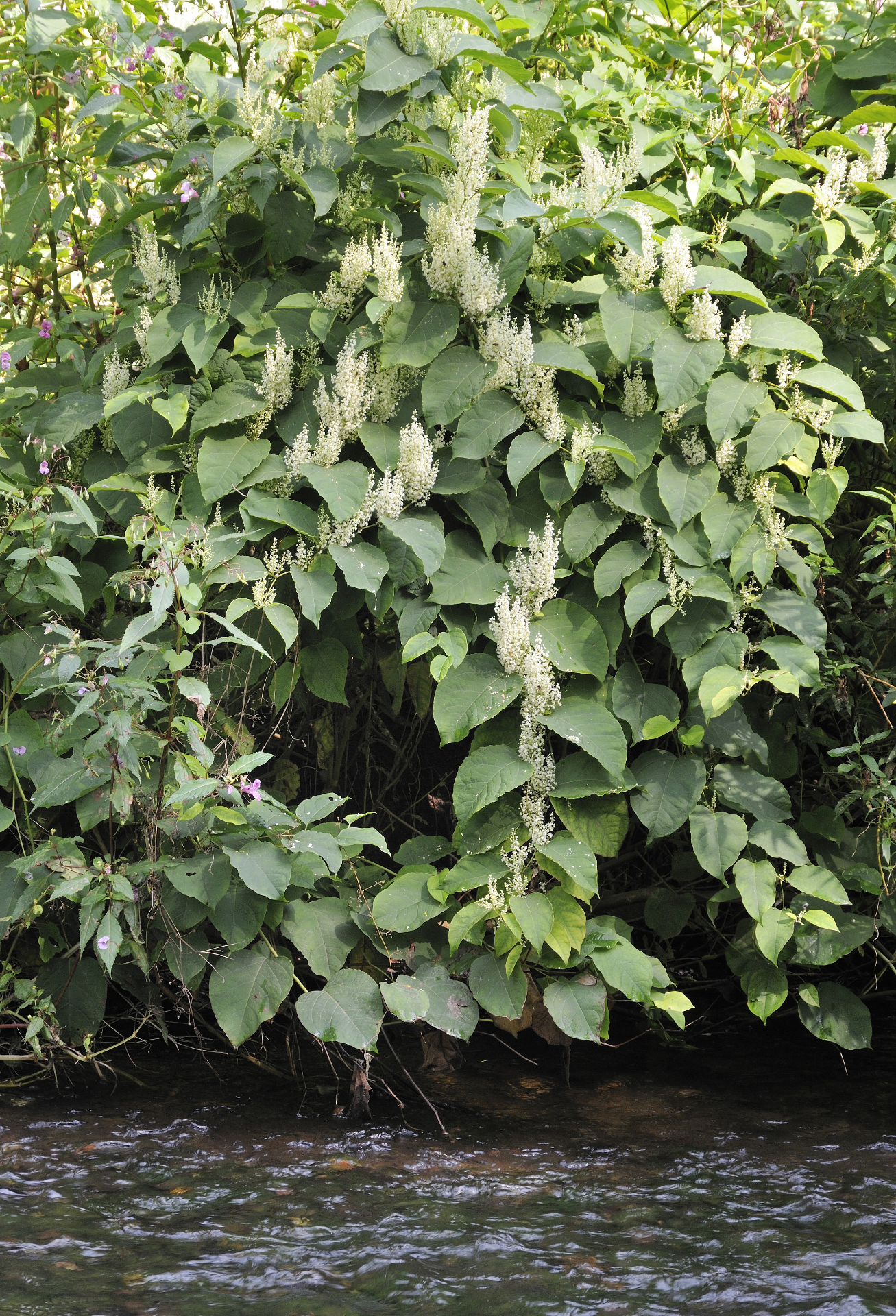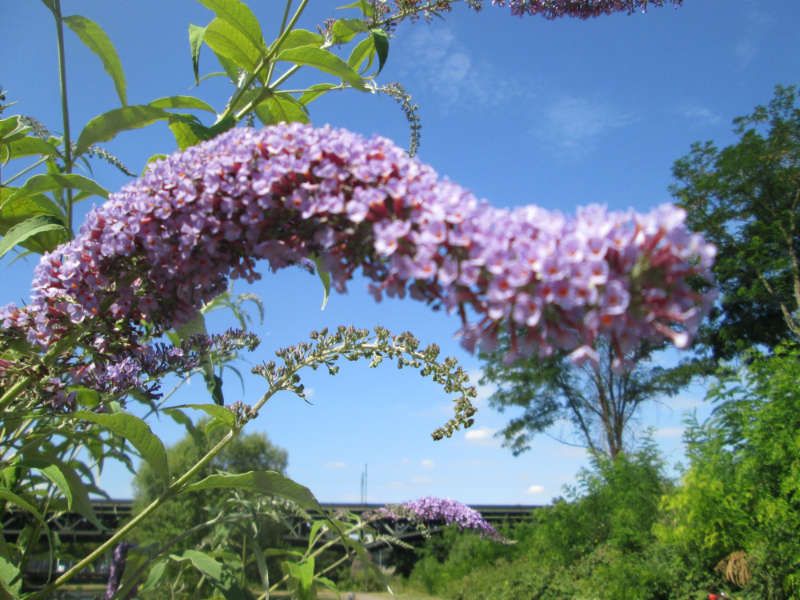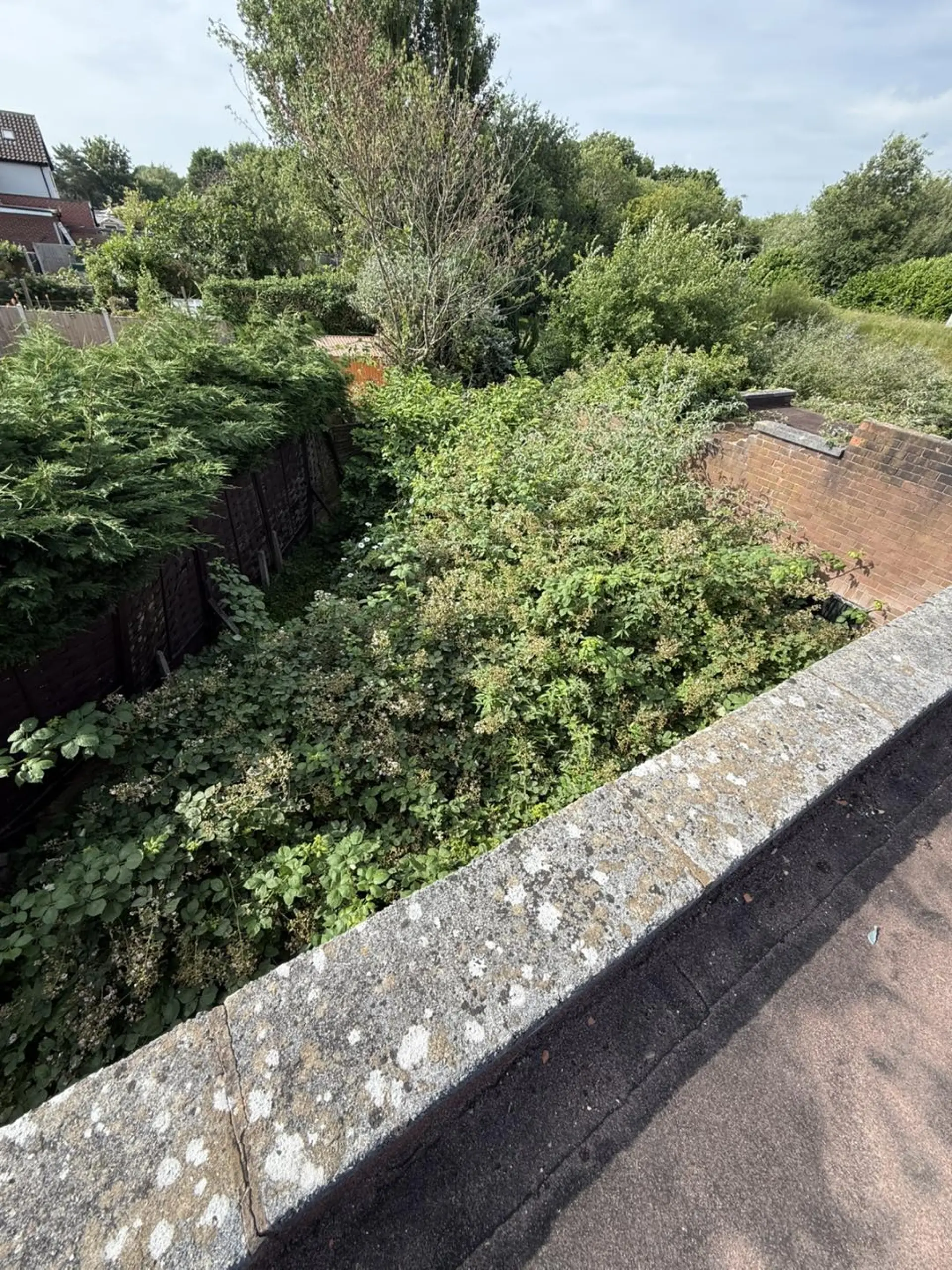This article asks: what time of year should you treat Japanese knotweed? Kingsfield Environmental are Japanese Knotweed specialists working throughout Essex, London and UK Wide. This article looks at how to identify Japanese knotweed and who can remove Japanese knotweed.
What Time of Year Should You Treat Japanese Knotweed?
Like any other plant, Japanese knotweed is best treated in the spring and summer, when rain is less likely to wash away any herbicide-based treatment. However, if the location of the weed has been determined, you can excavate all year.
Glyphosate must be administered after the plant has bloomed in late summer or fall to reduce Japanese knotweed. Using glyphosate early in the year may slow development but will not kill the plant; big mature stands of Japanese knotweed may need to be treated for two or three years to be eradicated.
Identifying Japanese Knotweed
The creamy-white panicles that Japanese Knotweed produces in clusters between late August and mid-September are a telltale sign of the plant. Alongside the leaves foliage, Japanese knotweed blossoms can grow up to 10 cm long and 0.5 cm broad, giving the plant a thick look that frequently hides the characteristic stems.
A Japanese knotweed plant that is in bloom indicates that it is well-established and may be difficult to get rid of. A longer-lasting infection can be avoided by locating the plant and treating it before it blooms in the late summer.
Japanese knotweed branches form in discrete segments with a hollow centre and have a cane-like appearance. The shoots of Japanese knotweed are similar to bamboo shoots in appearance, grow to a height of two to three metres, have a hollow internal stem, and are red in the spring and green in the summer.
When the plant is in foliage, the shield- or heart-shaped leaves of the Japanese knotweed are bright green, with pointed ends, and they are distributed at staggered intervals along the stem. The plant's green foliage doesn't last during the colder months, so don't expect to see any leaves throughout the winter. Leaves can reach up to 14 cm long.
The knotweed leaves fuel the rhizome system and fosters future growth; the deep green, heart-shaped knotweed leaves have a pointed tip and a zigzag growth pattern; they can grow up to 20 cm long. These are some of the most crucial qualities to seek.
Given its hollow stems, which can reach a height of three metres and sport purple speckles, early summer is the greatest time to examine Japanese knotweed.
The less common gigantic knotweed can reach heights of up to 5 metres, while the hybrid fallopia x bohemica can reach heights of up to 4 metres. Dwarf knotweed, on the other hand, is normally less than one metre tall.
The seeds of Japanese knotweed are heart-shaped and have little wings. Since only the female of the species was transported into the UK, new growth from seeds is extremely unusual. Japanese knotweed has mostly spread throughout the country due to the transfer or fragmentation of its rhizomes.

Rhizomes are the plant's root systems, with a fragment of a rhizome capable of creating a completely new plant if given the right conditions.
Unfortunately, Japanese knotweed has been seen to hybridise with other related species, resulting in new plants that can spread by seed farther down the line. Giant Knotweed (Reynoutria sachalinensis), Himalayan Knotweed (Persicaria wallichii), and Dwarf Japanese Knotweed are the four primary kinds of Japanese Knotweed (Reynoutria Japonica).
Japanese knotweed grows the fastest in the spring and begins to sprout new branches, making it much simpler to identify. When recognising Japanese Knotweed in the spring, watch for new shoots that emerge as red/purple asparagus-like spears, leaves that are dark green or red and coiled up, canes that extend up to 3 metres in height, and shoot with right red/pink tips that can grow up to 1-3cm broad.
Once spring has arrived, shoots take on a greener tint and become more visible due to their faster development; now developing as spear-shaped shoots, sometimes described as 'asparagus-like', the leaves are crimson and curled up, but they quickly turn green as the plant goes upwards.
What To Do If Your Neighbour Has Japanese Knotweed?
Depending on where you reside in the UK, different laws apply to Japanese knotweed; nevertheless, if your neighbour has it on their land, they are not required by law to remove it from their own. In contrast, if it begins to infringe on your land, they are creating a private nuisance and might face legal action. It is important to identify and treat Japanese knotweed as soon as possible since doing so not only yields a speedier resolution but also saves money.
Given that it might badly destroy their property and the environment, you should inform your neighbour as soon as you believe they have Japanese knotweed.
The majority of the time, your neighbour might not be familiar with Japanese knotweed or be aware of the problems it might cause. Do not file a lawsuit before you have informed them of the problem since they could not be aware. If they are hesitant, just describe the harm it can cause to their property and suggest they conduct their own research; this ought to be enough to persuade them.
It is vital to identify and treat Japanese knotweed as soon as possible since doing so not only facilitates a quicker resolution but also prevents costs from rising. The majority of the time, your neighbour might not have recognised the Japanese knotweed and thus might not be aware of the harm it can do. You should notify your neighbour as soon as you suspect they may have Japanese knotweed since it can seriously harm both their property and the environment.
Who is Legally Responsible for Japanese Knotweed?
Since Japanese knotweed is an invasive species, it is the landowner's obligation to stop it from spreading to nearby property (or into the wild), thus any removal of the plant must be done carefully and carefully.
Given that Japanese Knotweed is prohibited from being planted or caused to grow in the wild according to Schedule 9 of the Wildlife and Countryside Act 1981, there is no legal requirement to treat or remove it from the ground.
Who Can Remove Japanese Knotweed?
Japanese knotweed can be removed with weedkiller, but it typically takes three to four seasons. Professional contractors will have access to more potent weedkillers, which might cut the time in half. To make efficient and cost-effective use of the product while reducing dangers to people and the environment, use weedkiller as directed on the package.
A glyphosate-based weedkiller is likely the most efficient and straightforward way for amateur gardeners to combat Japanese knotweed. The following spring, glyphosate-treated knotweed will frequently generate small-leaved, bushy regrowth that ranges in height from 20 inches to 3 feet.
The regrowth must be managed since it looks so significantly different from the typical plant. Keep in mind that if you choose to control Japanese knotweed on your own, you won't be able to acquire an insurance-backed warranty.
This may be crucial if you want to sell your home soon or if a neighbour has threatened legal action because of the spread of knotweed from your property.

Since glyphosate does not operate selectively, it is important to avoid applying it on any garden plants' leaves or other green parts. Glyphosate is safe to apply at the base of non-suckering woody plants if it is applied carefully and the bark is old, woody, and brown. There is no chance that garden plants will absorb glyphosate via their roots because it is not active in the soil.
Licensed businesses provide Japanese knotweed eradication and they can provide risk reports for mortgage reasons along with suggested treatment strategies and, if necessary, give insurance-backed assurances. The PCA Invasive Weed Control Group (IWCG), a trade organisation for experts in Japanese knotweed, was founded with the help of the Royal Institution of Chartered Surveyors (RICS) and the Property Care Association (PCA) and it offers a roster of approved consultants and contractors.
Do you have a Japanese Knotweed problem? If you require Japanese Knotweed Removal in Essex or throughout the UK, contact our expert today.


